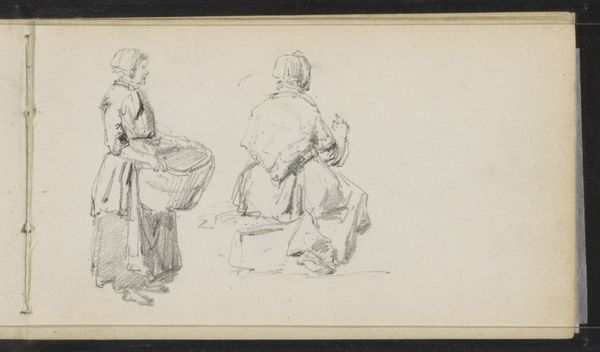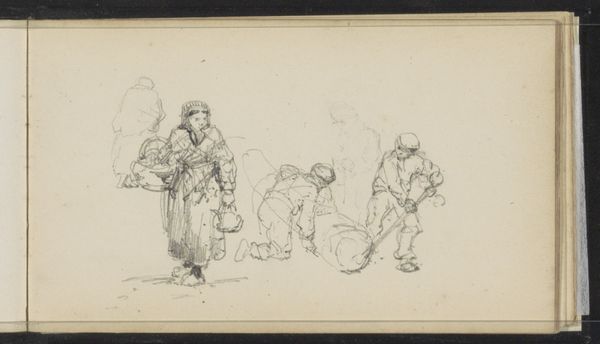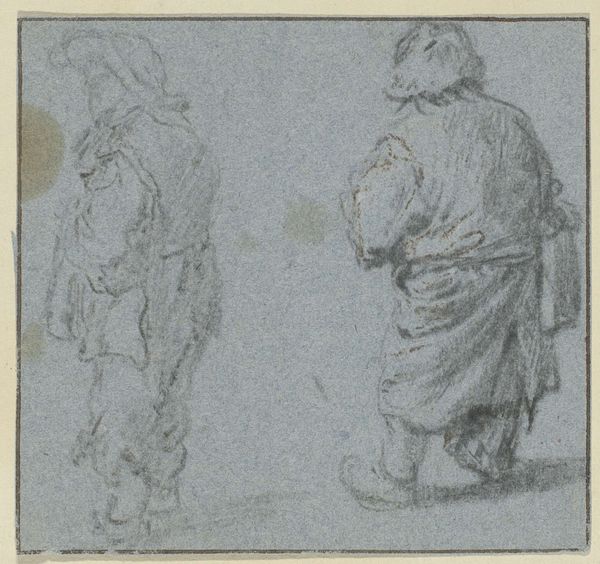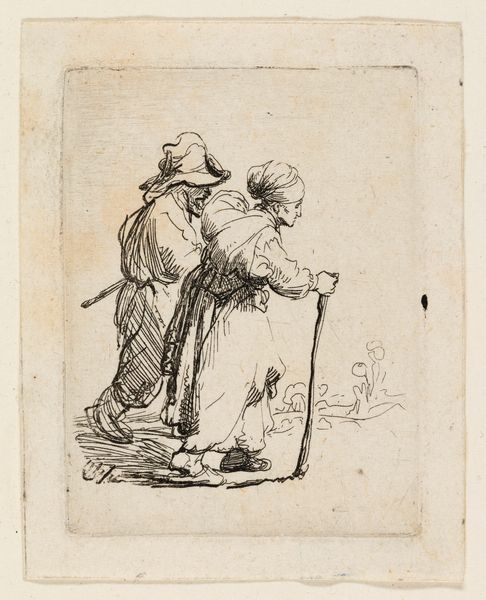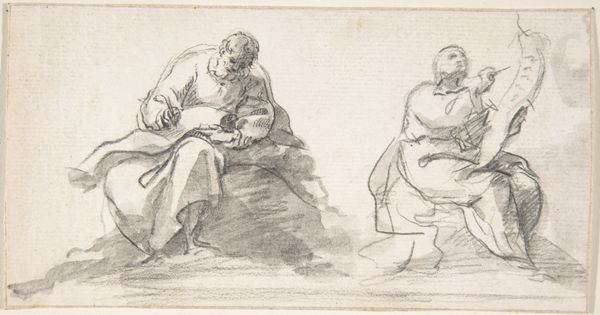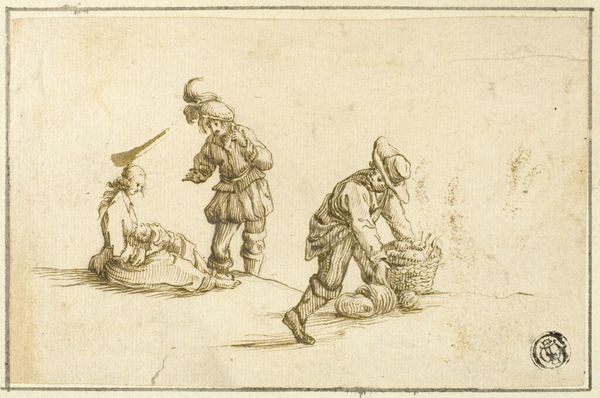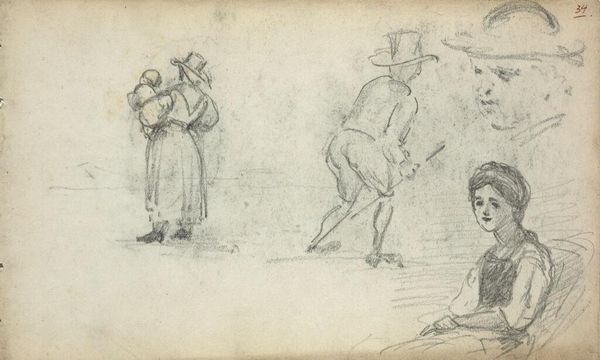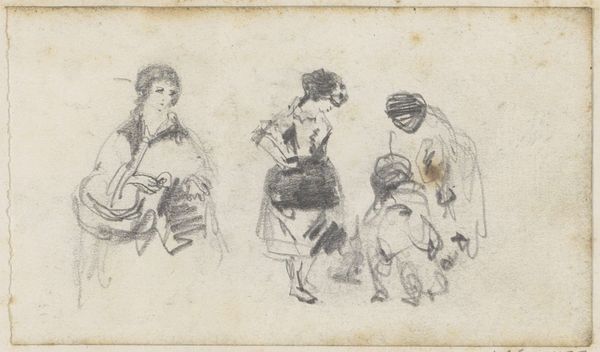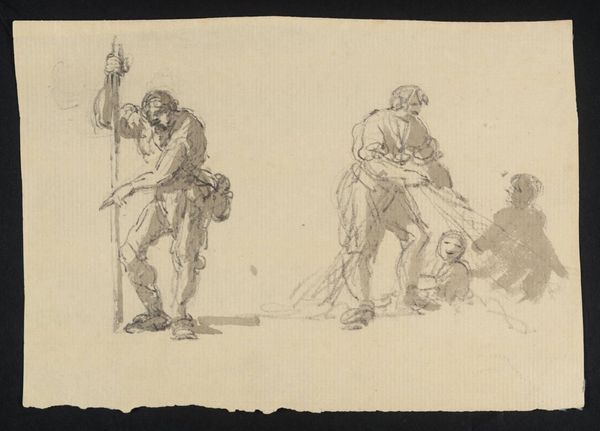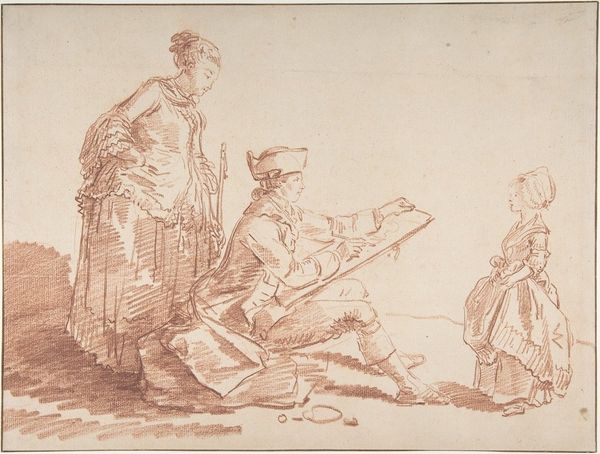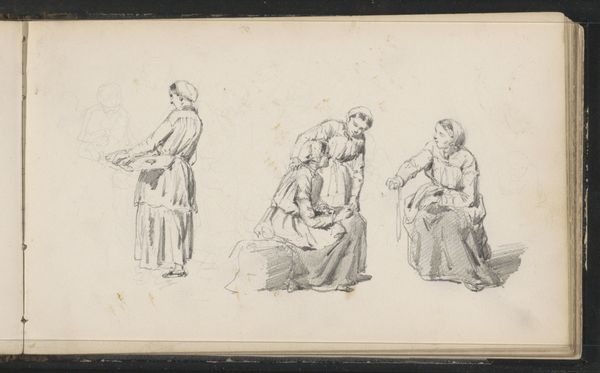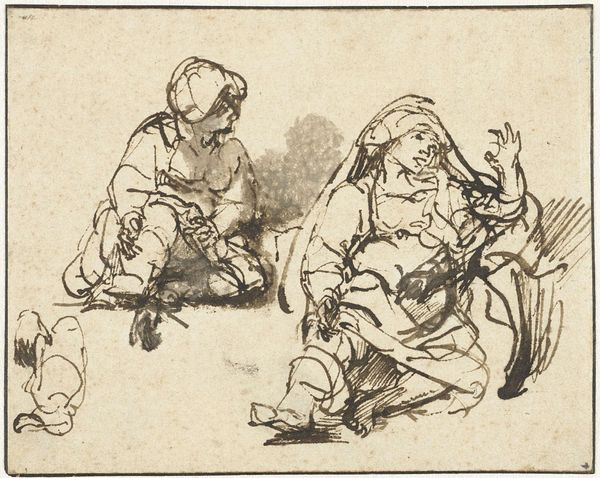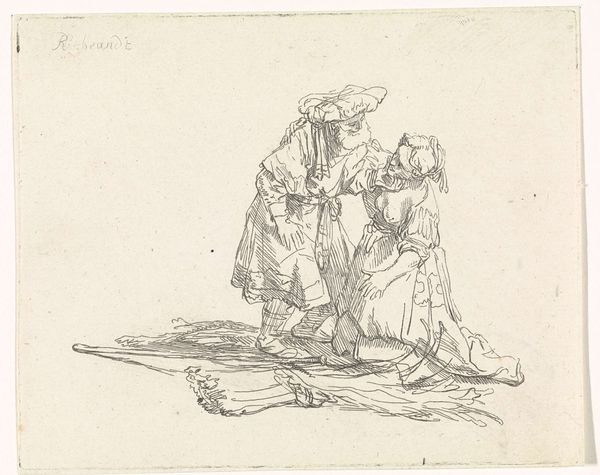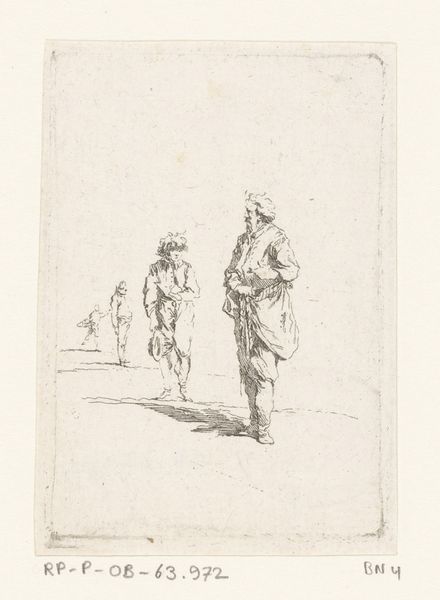
drawing, paper, pencil
#
portrait
#
drawing
#
figuration
#
paper
#
pencil
#
genre-painting
#
academic-art
Copyright: Rijks Museum: Open Domain
Curator: This sketch is called "Twee figuren," or "Two Figures," created by Cornelis Springer around 1860 to 1866. You can currently find it here at the Rijksmuseum. Springer worked primarily with pencil on paper for this piece. Editor: There's a certain quiet sadness to this image. The sketchiness of the figures, combined with their postures—one standing with his arm raised, perhaps signaling, and the other kneeling—gives it a vulnerable, almost forlorn air. Curator: The beauty of these quick sketches is that you can interpret them so many ways. The loose pencil work and open composition leaves room for imagination. Consider, for instance, the raised arm: is it a signal, or is he simply reaching for something? The ambiguity is deliberate, I believe. Editor: Absolutely, the sketchiness heightens the mystery. Technically speaking, note the varying degrees of detail—the standing figure more defined than the kneeling one. That selective emphasis contributes to the overall feeling of… displacement, I suppose. Curator: Displacement? I hadn't considered that, but the difference in clarity between the two figures creates a psychological distance between them. Are they connected? Are they experiencing the same thing? The composition pulls them apart despite being so close. Editor: Indeed. And think about the gaze as well. It's almost as though the figure on his knees is glancing downwards into nothing. His body position along with that lost expression produces a visual field of emotion within the sketch's physical form. It resonates! Curator: This little sketch manages to conjure quite a complex scene from just a few simple lines. I think Springer’s focus here wasn’t about rendering reality but evoking an emotion, leaving us as viewers to fill in the narrative gaps with our own interpretations. Editor: It's fascinating how much story resides within a seemingly simple piece. What begins as line and form transforms into a potent psychological portrait—less about who they are, and more about what they feel. It is just a fragment, and that makes it so captivating.
Comments
No comments
Be the first to comment and join the conversation on the ultimate creative platform.
